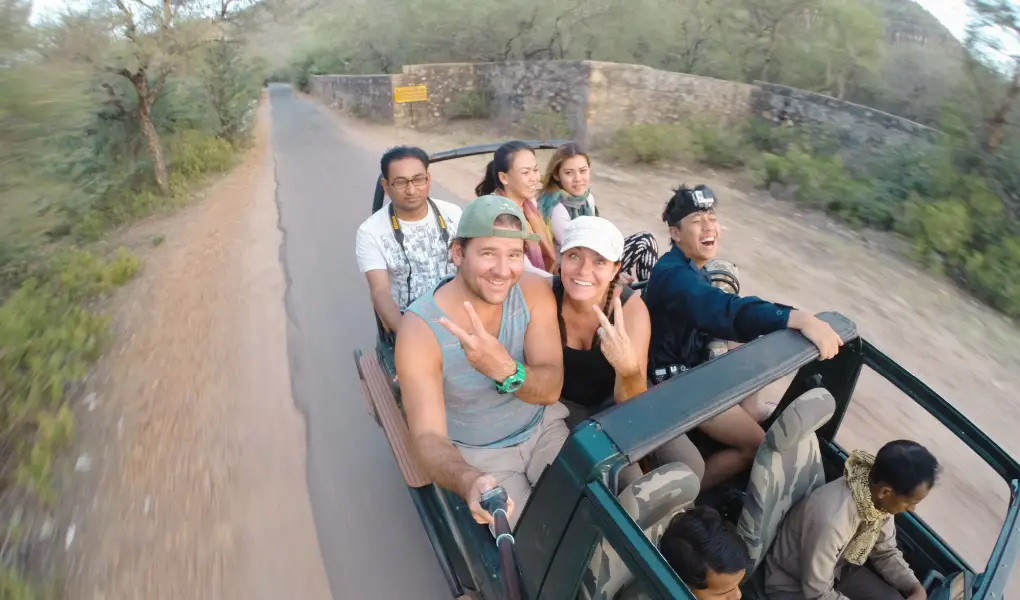Visiting Ranthambore Tiger Reserve in India can be the thrill of a lifetime. After all, in terms of wildlife encounters, it doesn’t get much better than seeing a Bengal tiger in the wild. However, those who visit Ranthambore National Park unmindfully may be left extremely disappointed by the experience.
There are only a handful of places left on the earth where tourists can view tigers in the wild. These destinations include Russia, China, India, Bhutan, Nepal, Myanmar, Bangladesh, Malaysia, and Indonesia.
Once roaming from the Caspian Sea to the east coast of Russia, the magnificent tiger is now on the endangered species list. Furthermore, while there is only one species of Tiger, there are six subspecies of tigers: Sumatran, Indochinese, Malayan, Amoy (South China), Amur (Siberian), and Bengal (Indian).
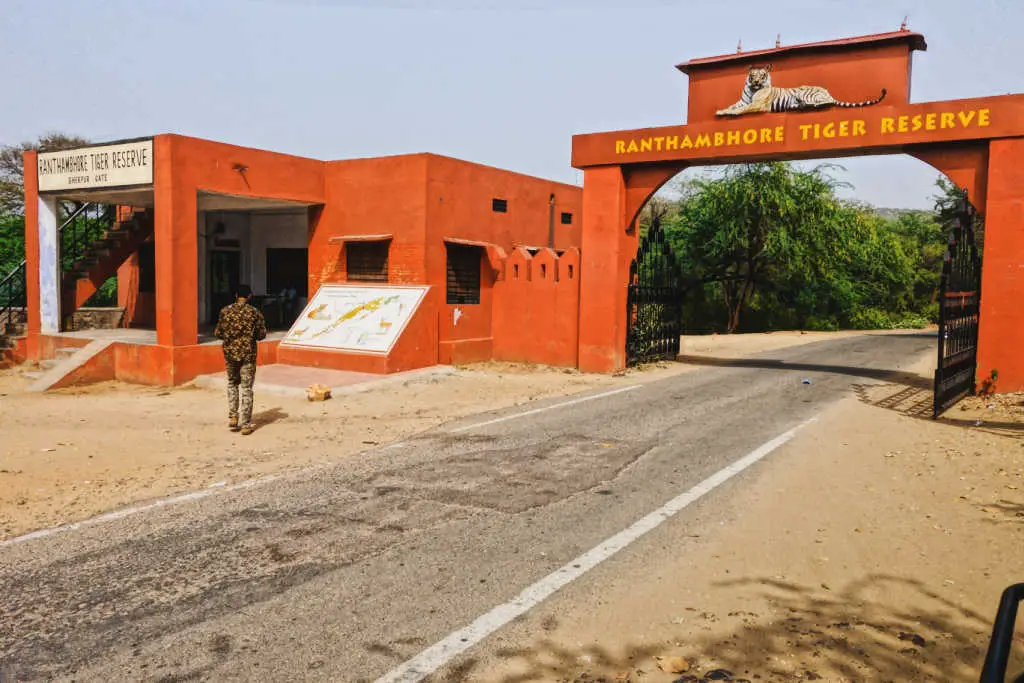
The US may have the highest population of tigers by private ownership. However, if you’re looking to witness them in the wild, the best place to see them is in India.
With over 50 tiger reserves, India has the highest population of tigers compared to any other country, with numbers around 2,500. Generally, the most popular national parks to view tigers in India include Bandhavgarh, Corbett, Kahna, and Ranthambore.
Disclaimer: Below is an honest review of our three-night stay visiting the Ranthambore Tiger Reserve. In short, it left us in despair and disappointed. By the end, we were lied to and deceived, and even felt that our lives were in danger. Nevertheless, the hotel (Hotel Ranthambore Regency) we stayed at was comfortable, clean, and the food was good. Our problems mainly stemmed with park operations, as you’ll soon become aware of.
Wonderful Place for Wildlife
The highly protected wilderness of Ranthambore Tiger Reserve is full of wonderful wildlife, much of which you probably won’t see, and some interesting temples. Nevertheless, during our visit, we spent most of the time driving around in circles through a dry barren forest, occasionally spotting monkeys, deer, antelopes, peacocks, and birds.
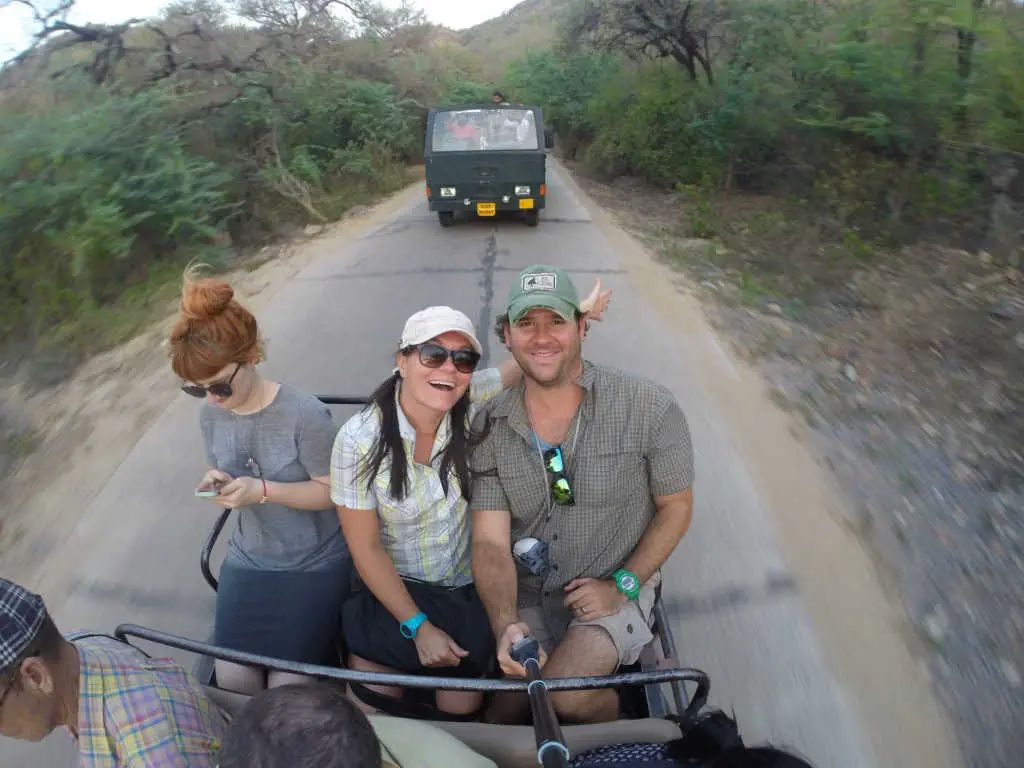
A few of the most exotic animals in the park include leopards, sloth bears, striped hyenas, crocodiles, cobras, and various small cats like the jungle cat.
7 Things to Know Before Visiting Ranthambore Tiger Reserve
Ranthambore National Park is also known as Ranthambore Tiger Reserve. It’s about 250 miles south of Delhi and is considered to be one of the finest places to view wildlife in India.
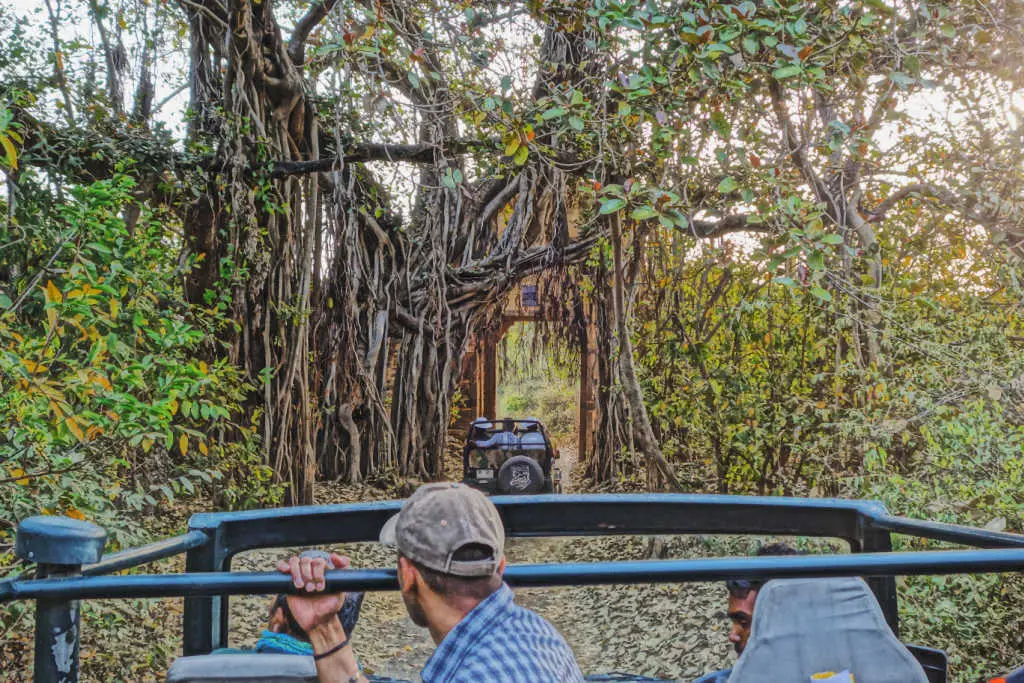
The park is most frequented from November to June―this is the best time to visit Ranthambore Tiger Reserve. However, it’s also considered the summer months from April to June in India, with temperatures easily reaching 115°F.
The overall setting of the park is quite interesting, and perhaps even unusual. As a tropical dry deciduous forest, the terrain during summer is exceptionally arid, with limited brush, conveying a fall-like ambiance. As a result, tigers are extraordinarily easy to spot roaming through the woodland.
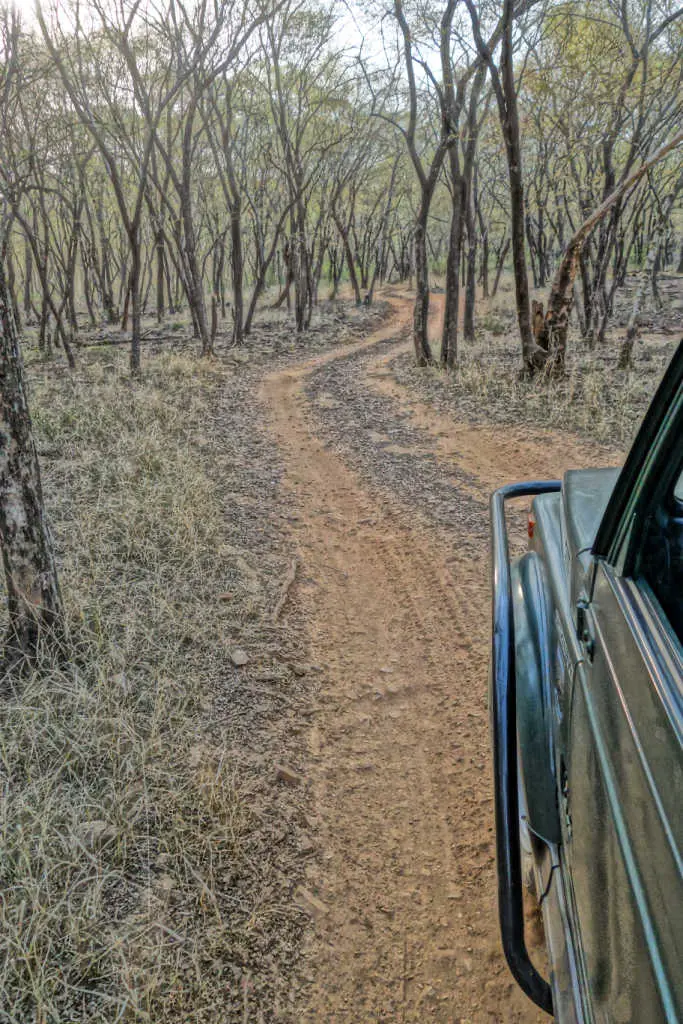
Next to two large lakes, the area around Fort Ranthambore quickly changes from dry and barren to jungle-like. From our experience, this is where visitors are most likely to view tigers.
After all, it doesn’t take a genius to realize that during the most scorchingly hot days of summer, the park’s tigers will find relief near these massive watering holes. So, then the question is, why did we spend 12 hours driving around the desolate forest in the “hope” of spotting a tiger when park rangers knew exactly where they were located?
Ranthombore Tiger Reserve
Here are the seven things you need to know before visiting Ranthambore Tiger Reserve:
- There Are 10 Zones
- Tickets Are Bought Out a Year in Advance
- The Park Controls Who Sees the Tigers
- You’ll Be Taken to Zones That Have No Tigers
- Park Rangers Will Put On a Wonderful Theatrical Performance
- The Best Way to Visit Is…
- Money Talks
We’ll discuss each of these topics in detail below.
Remember to Bring: Make sure to bring Vortex Optics Diamondback HD Binoculars to easily spot the tigers from a distance and, a Fashionable Sun Hat. Also, this is our choice for travel health insurance.
1. There Are 10 Zones
Vehicular traffic in Ranthambore is controlled by assigning vehicles to one of 10 designated safari zones. The purpose of the zones is to prevent overcrowding and to evenly distribute visitors to the park. Zones 1-5 have the most tiger sightings while zones 6-10 have far fewer.
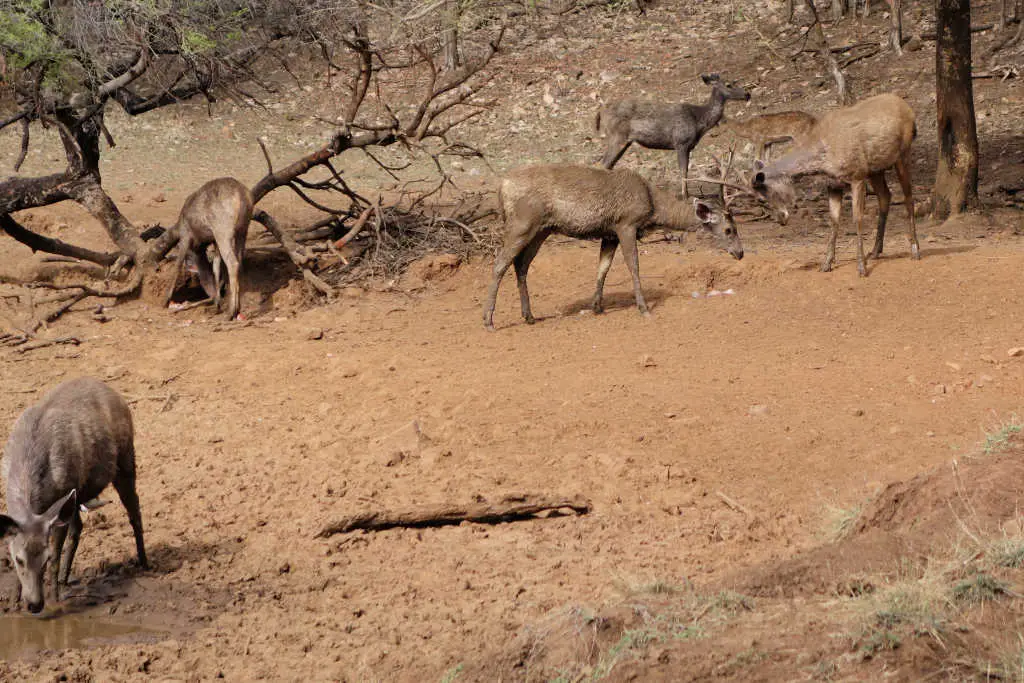
Visitors have the option to explore the park by either jeep (gypsies) or canters. In brief, the Jeep is an open-top six-passenger vehicle that can go to all zones and moves quite speedily through the park.
Canters, on the other hand, are 20-passenger open-top buses that are limited to the zones they can visit and move more slowly through Ranthambore Tiger Reserve. Also, they cost about 25 percent less per ticket.
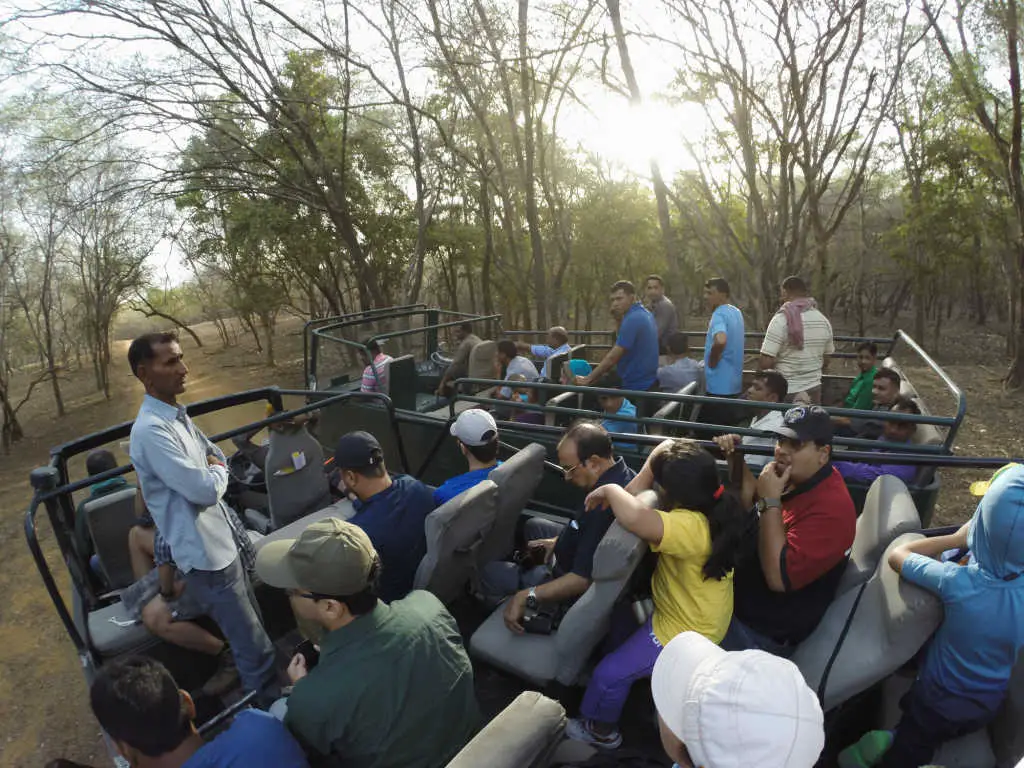
Upon purchasing tickets, most guests will be assigned to a zone between 6 and 10―because these are the zones with the fewest tiger spottings. By far, zone three is the best section of the park because it contains two large lakes and has the most sightings. In addition, zones four and two offer some probability―thus, to spot a tiger in the other zones would be considered by many to be lucky.
Our Itinerary in Ranthambore Tiger Reserve
For example, when we initially booked with wildlifetrails.co.uk (which we don’t recommend), we were assigned the following morning and afternoon game drives in a jeep (gypsy) by day, each was three hours long:
- 1: a.m. Zone 6-10, p.m. Zone 6-10
- 2: a.m. Zone 6, p.m. Zone 1-5
- 3: a.m. Zone 6-10, p.m. Zone 6
- 4: a.m. Zone 3-5
When we received our finalized itinerary, less than one month before arrival, below are the game drives we were assigned:
- 1: a.m. Zone 1-5, p.m. Zone 1
- 2: a.m. Zone 6, p.m. Zone 5
- 3: a.m. Zone 5, p.m. Zone 6
- 4: a.m. Zone 7-9
Unbeknownst to us, we were not assigned to any of the zones that had the vast majority of tiger sightings. Foolishly, we were excited to see our final itinerary because were assigned lower zones.
Arriving at Ranthambore Tiger Reserve
When we finally made it to the day of our jungle safari, the zones we explored were:
- 1: a.m. Zone 1, p.m. Zone 1
- 2: a.m. Zone 6, p.m. Zone 5
- 3: a.m. Zone 3, p.m. Zone 1
- 4: a.m. Zone 1 (canceled)
The only safari that changed was in the morning on day three, from zone 5 to 3. Each safari is three hours, so after driving 12 hours through zones 1, 5, and 6 we were a bit demoralized. Especially, when at the end of the day, other guests were gleefully gloating about how they saw the tigers in Zone 3.

After four game drives, and other guests stating how the tigers were in Zone 3, we finally caught on to the scheme. Therefore, on the night of day two, we begged our main contact/ranger Vipul Jain to see if he could get us into zone three. In short, he was basically like, “Well, I don’t think I can get you in.”
VIPs and Photographers
Then, he begins talking about how zone three is only for VIPs and photographers (from the fancy resorts). Moreover, he stated, “You know, it’s not about the money because I don’t care about profit but if you had to go it would probably cost another INR 1000.”
At this point, we had already spent about USD 100 per safari, or USD 700 total, which we thought was more than enough, and were annoyed that Jain was attempting to milk us for more money. We gently declined.
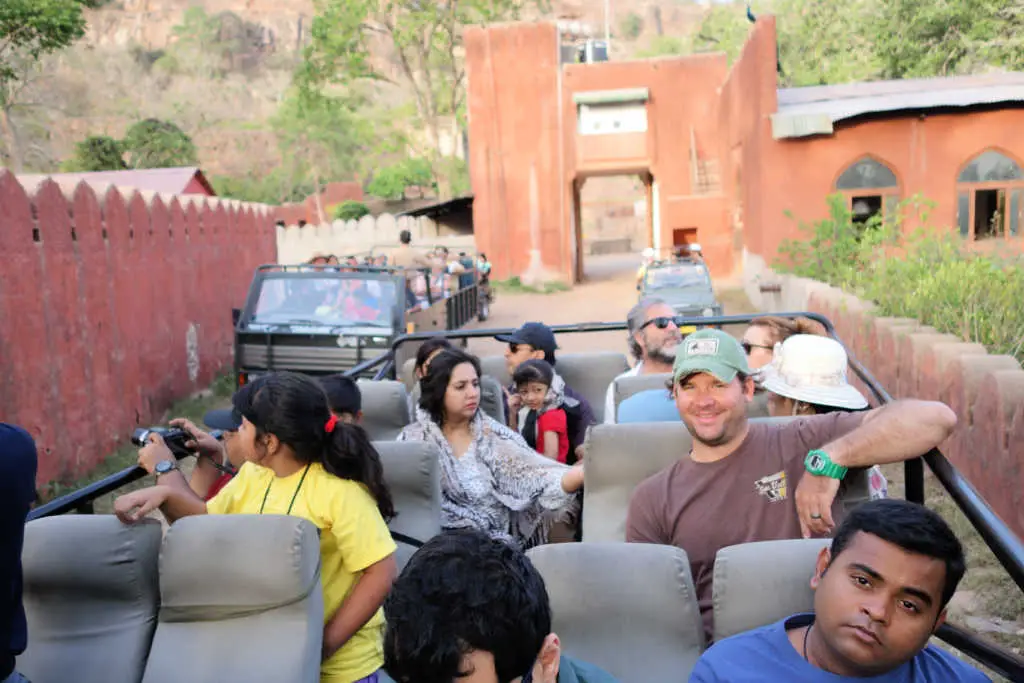
The next morning, on day three, a miracle occurs. Jain tells us that he can get us into zone 3 but only on a canter. We happily agree―the whole purpose of our trip to India was to see tigers in the wild.
We Made It to Zone 3!
During the first four game drives, the rangers/guides were a bit low-energy. (You were assigned new rangers with each safari). However, this morning, our guide was chipper and was literally like, “You guys ready to see tigers?” We, of course, are like yeah!
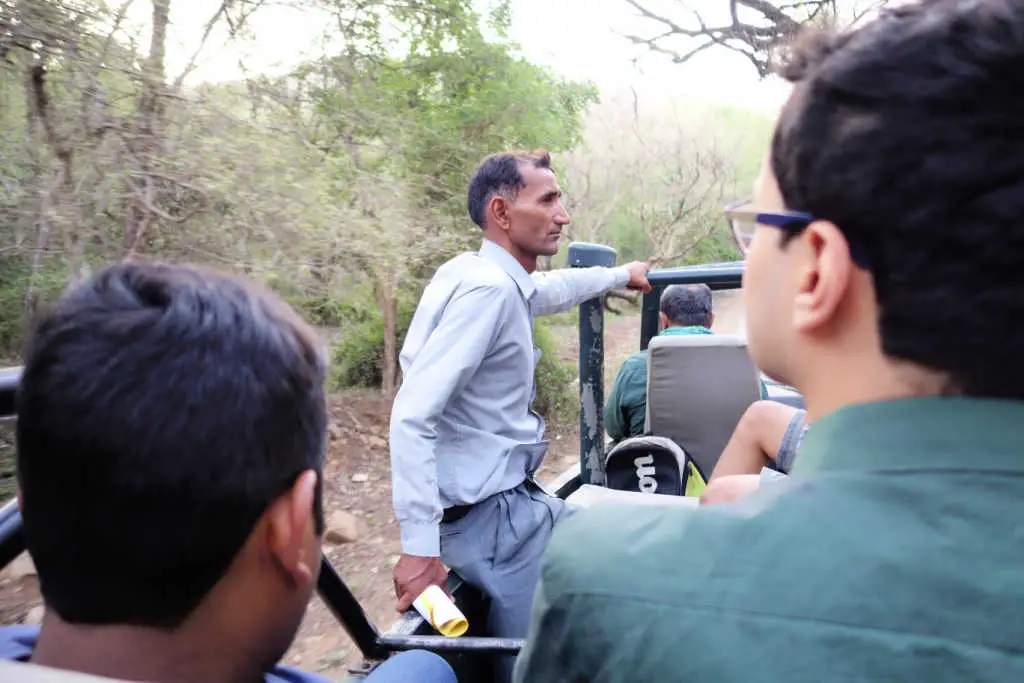
The guide asks how long we’ve been at Ranthambore Tiger Reserve, and we tell him that this is our third day. He was shocked that we hadn’t seen the tigers.
Digging deeper, we’re like, “Are you sure we’re going to see tigers today?” He responds with, “Oh yeah, we’re definitely going to see the tigers.”
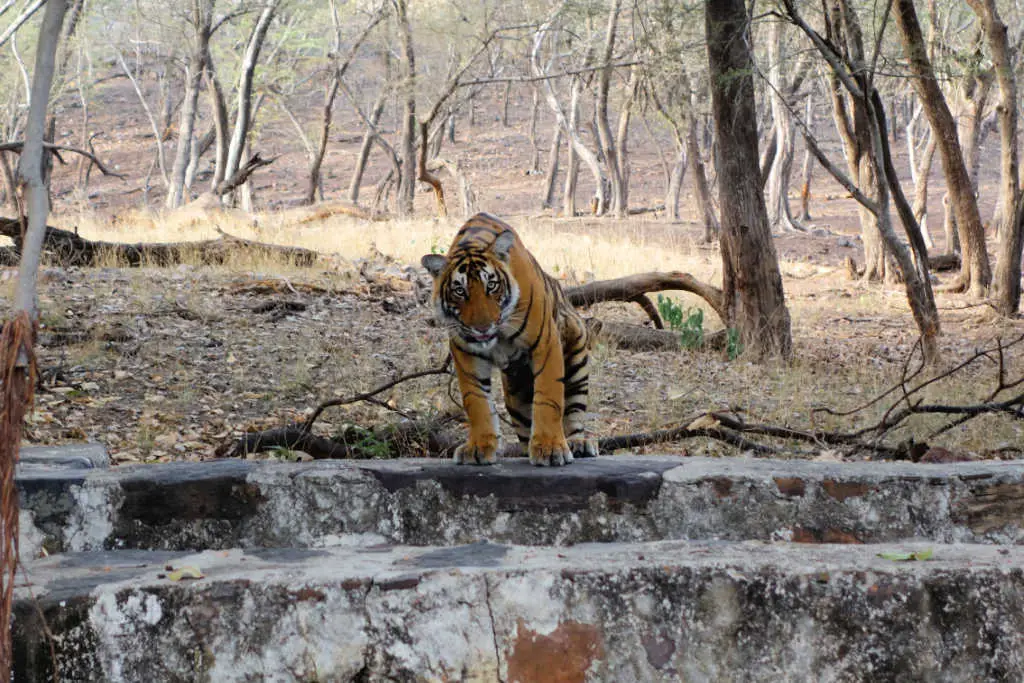
While on safari we speak with the guide and he explains how the entire system works. Below is everything you need to know about Ranthambore Tiger Reserve from our personal experience visiting the park.
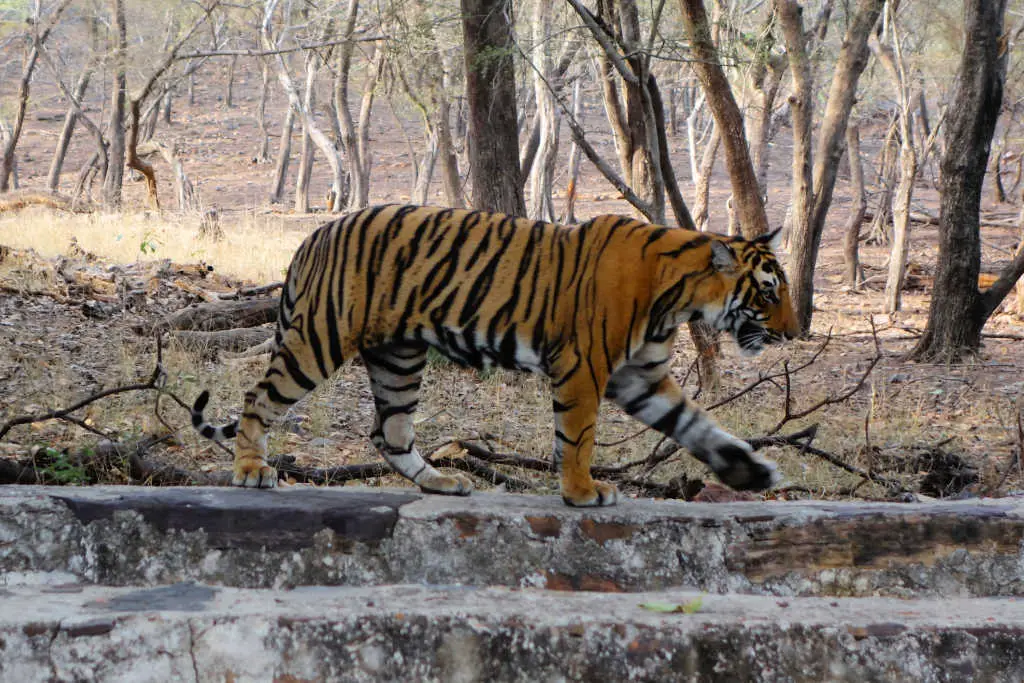
2. Tickets Are Bought Out a Year in Advance
We had no idea that some group/person is purchasing all of the safari tickets as soon as they become available, up to 365 days in advance. Consequently, this is why the zones for our itinerary changed so many times.
It’s not until visitors arrive at the park that tickets to zones are finalized. Much of the calculation behind which zones tourists are allowed to visit is determined by the hotel they’re staying in, the company they booked with, whether they’re a foreigner or local, or the ranger they’re working with.
For example, if you’re staying at a place like The Oberoi Vanyavilas Wildlife Resort or Six Senses Fort Barwara you’ll most likely have a fantastic experience because you’re spending a lot of money.
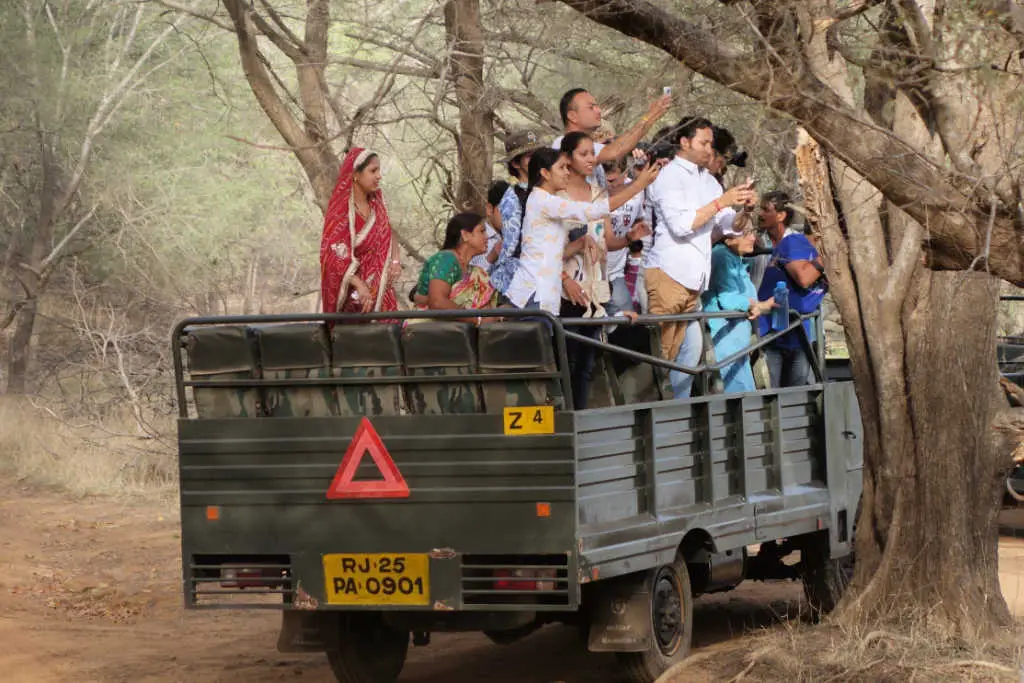
Passengers on the canters seem to be comprised of mainly Indian Nationals, while jeeps seem to be for foreigners. Based on our experience, the canters go directly to the tigers and have a significantly higher probability of seeing the tigers.
Generally, the goal is to make it appear that everyone has an equal opportunity to partake in a genuine safari. Realistically, rangers know at all times what zone the tigers are located in. As a result, tickets are divided based on a level of prominence.
3. The Park Controls Who Sees the Tigers
Knowing how controlled the process of seeing the tigers is, there’s little doubt that guests of luxury resorts, like nearby The Oberoi Vanyavilas Wildlife Resort or SUJÁN Sher Bagh Luxury Safari Camp see the tigers more frequently than mid-range or budget hotels. To begin with, guests of Oberoi are spending significantly more money when compared to low-end hotels, and don’t want their most elite guests disappointed.
Also, don’t be surprised if you haven’t seen the tigers and rangers telling you something like, “Well, it’s wildlife, right? There are no guarantees in wildlife.” Seemed reasonable at the time, until you find out that anybody can go see the tigers at any time if you know the right people.
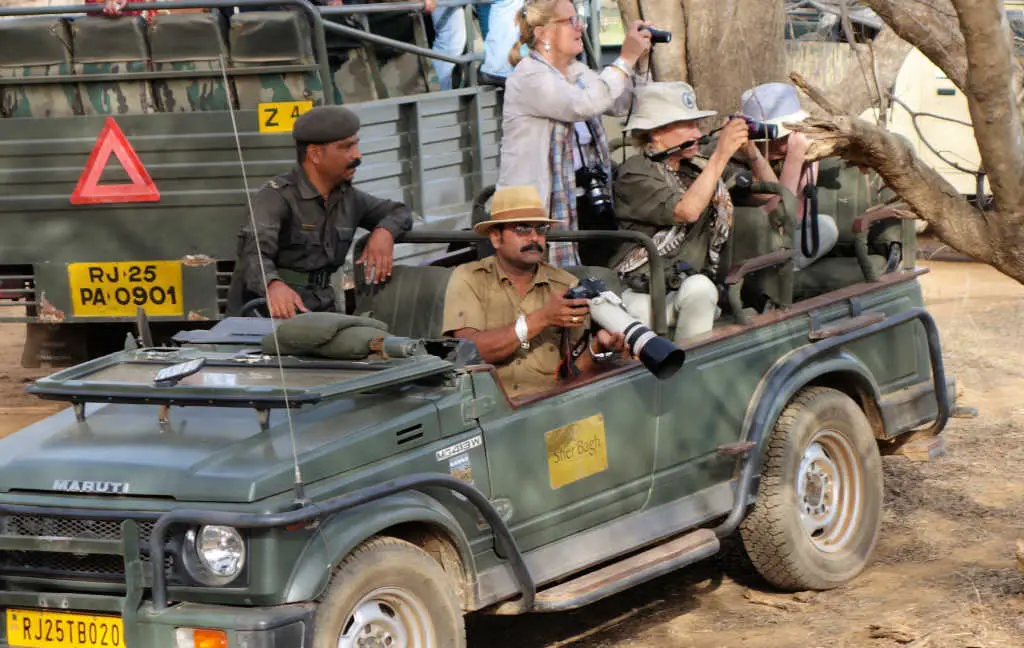
On our third day, during our morning safari in zone 3, we drove around for about 20 minutes. Then, all of the jeeps and canters go racing to a dirt road with the forest on one side and a massive lake on the other. We sat there for about five minutes, and all of a sudden five tigers came out of the forest and gradually strolled to the water, directly in front of our vehicles―like clockwork.
A Dreamy Oasis
To summarize, much of the other zones are simply brown dry barren forests, while this area looked lush and green. Once we saw it, we were like duh, this makes sense. All of the other watering holes were small, muddy, and looked contaminated. Conversely, this was like a dreamy oasis.
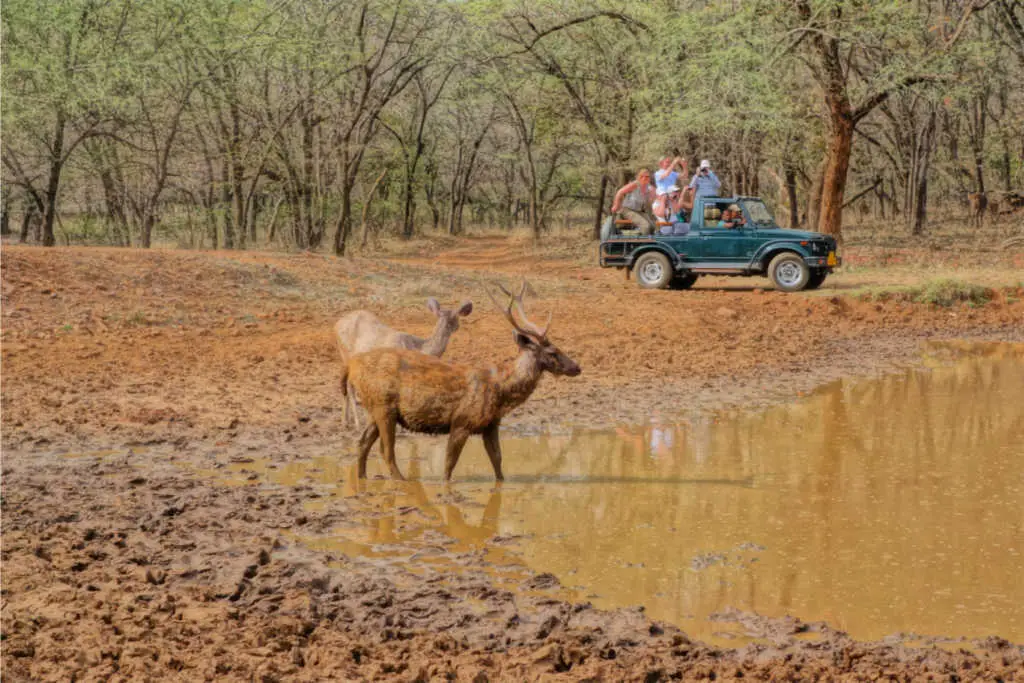
If I were a tiger, would I want to be next to these beautiful lakes during the hot summer months? Of course! Especially, knowing how much tigers enjoy swimming and being in the water.
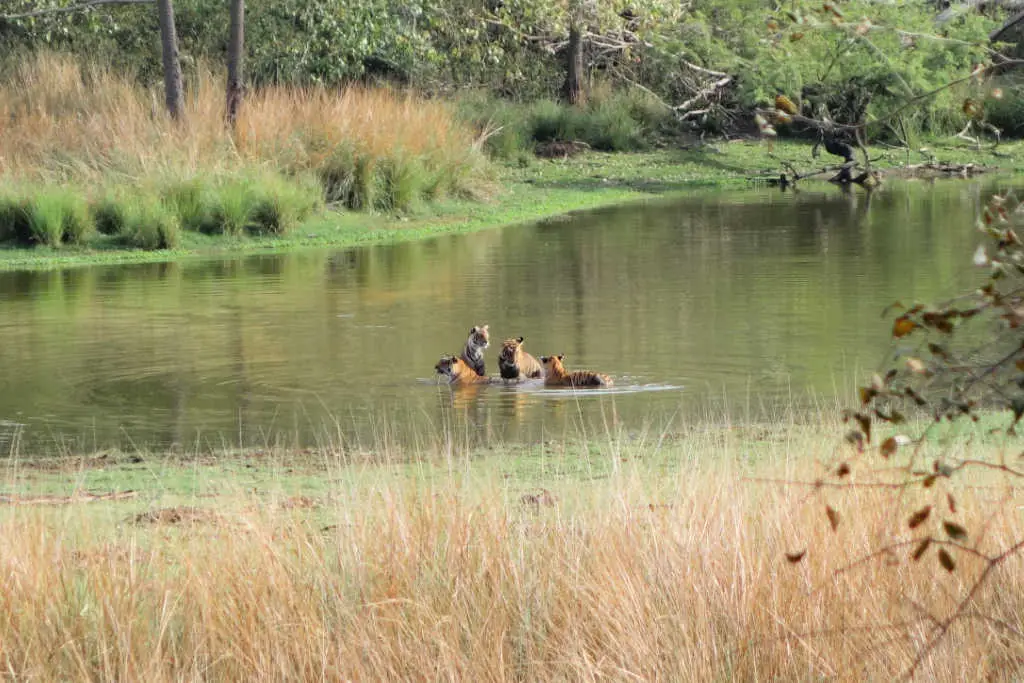
During our first four game drives, we toured the grounds for the entire three hours, because we didn’t see the tigers. However, on the fifth safari, when we saw the tigers, the tour ended an hour early.
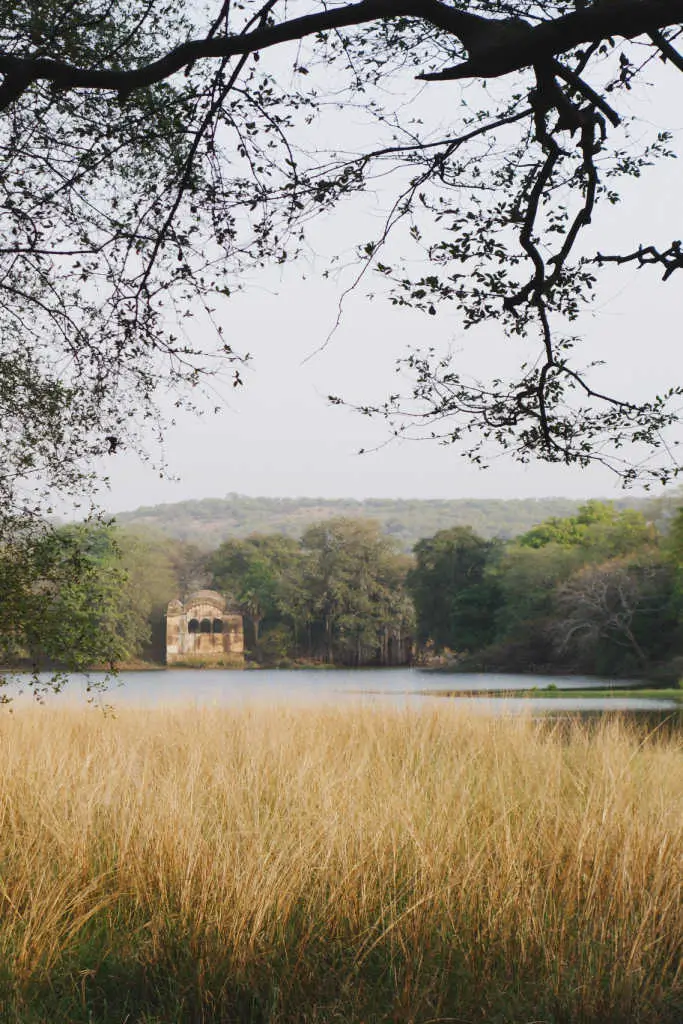
Honestly, we believe this is because everyone saw the tigers and everyone was happy. Essentially, there was no need to entertain the group with peacocks, antelope, and other vermin―everyone simply went back to their hotels to celebrate the sighting.
4. You’ll Be Taken to Zones That Have No Tigers
The game drives lasted for three hours each, one in the morning and afternoon. Essentially, for the first two days, the rangers drove us around for 12 hours and pretended to be on the hunt for tigers in zones 1, 5, and 6 (knowing the tigers weren’t in those zones).
To keep us busy, the guides would entertain us with peacocks, antelope, other various small animals, and birds. Nevertheless, the highlight was a beautiful kingfisher.
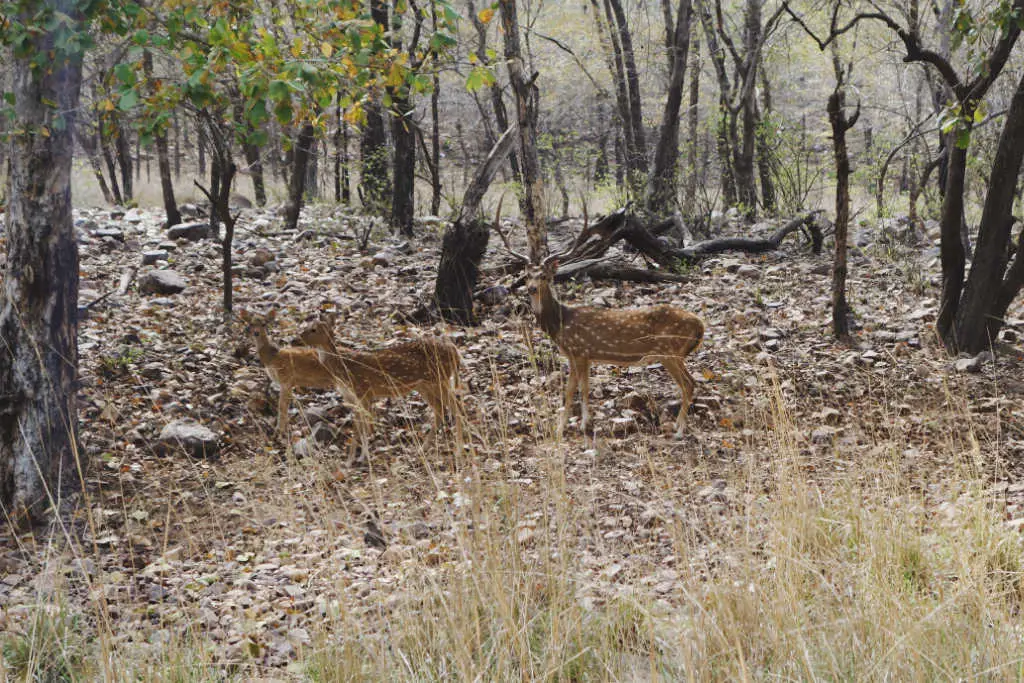
Before the afternoon game drive, on day three, after seeing the tigers in the morning, we told our guide that we wanted to explore Zone 2, near the other big lake. Basically, the guide said that we could only go to zone 1.
At the same time, we’re telling him that we’ve already driven around zone 1 for six hours. After some further debate, he says, “Okay, we’ll go to both zones 1 and 2.”
Later, after about an hour of driving around in zone 1, in the dry barren forest, we’re like, “Ready to go to zone 2?” His response was, “We’re not going to zone 2.”
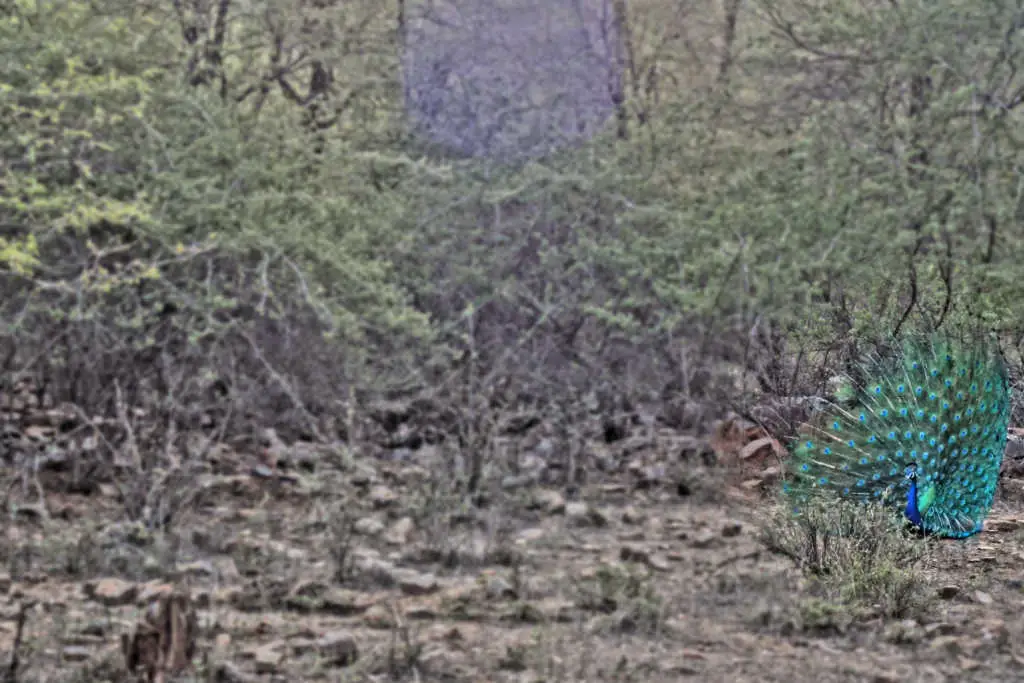
After another 15 minutes, we state something along the lines of, “Hey, how about that zone 2?” His response was, “We’re in zone 2.”
Of course, we knew where we were in the park after driving around the same zone for eight hours. We were still in zone 1 and he refused to take us to zone 2.
We’re Not Going to See the Tigers
At this point, we have three other people in the jeep, two of them from Borneo, all of whom are only visiting Ranthambore Tiger Reserve for one day, and one for one game drive. In short, we explain the process and tell them if we stay in zone 1, we’re not going to see the tigers.
At first, they didn’t really believe us. However, as minutes passed and we still hadn’t seen much wildlife, let alone tigers, everyone else began requesting to be taken to zone 2. At this point, he’s been caught lying about which zone we’re in and the whole jeep is ganging up on him.
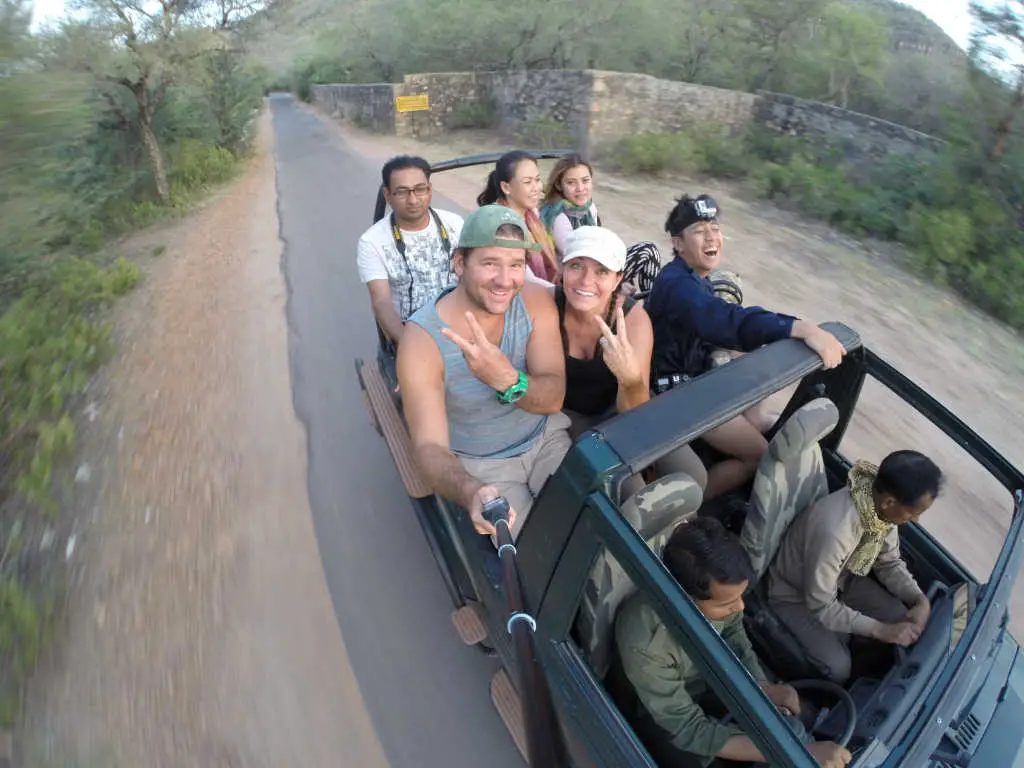
He ends up getting so mad that he turns around and scolds the entire jeep, “I don’t want to hear another word of this again, we’re not going to zone 2.” By the end of the safari, they believed us. Especially, when tigers were spotted in Zone 2 that afternoon.
Finally, one other significant aspect of this particular game drive that we’d like to address was that at one point the guides forced us to take a half-hour break. Basically, all of us got out of the jeep. Some stretched their legs, while others took photos. Everyone was simply trying to find a way to kill time.
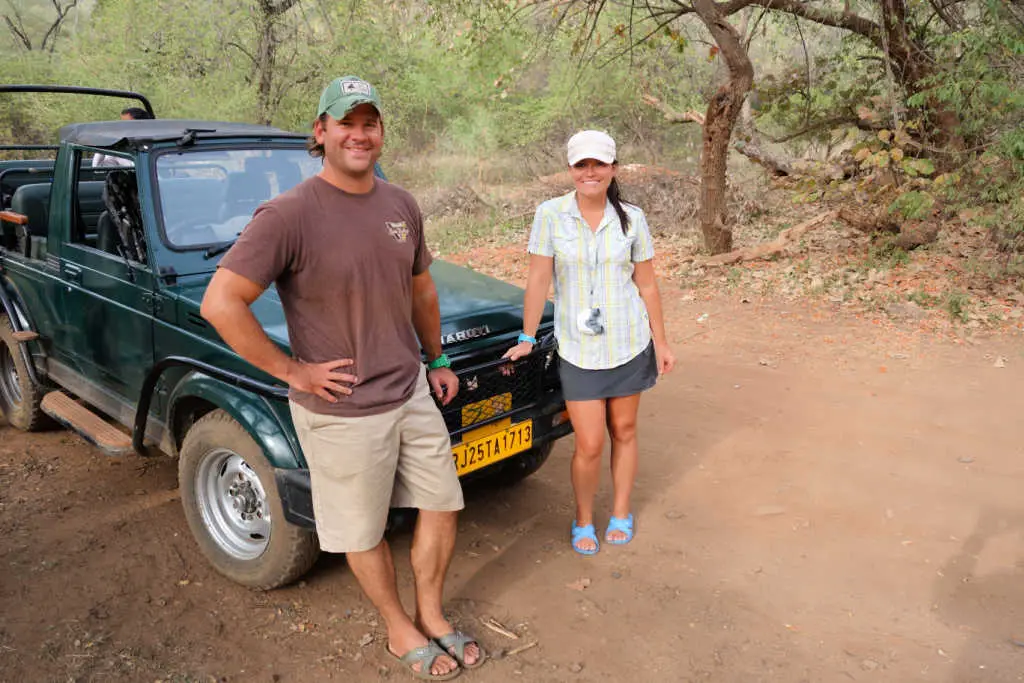
We ended up taking this break because the rangers said, “The tigers must be sleeping.” Of course, we’re thinking, we paid USD 100 to go on this afternoon safari and we’re not even driving around. Also, if the tigers are as promiscuous as the guides suggest, isn’t dangerous to be walking around a tiger reserve?
5. Park Rangers Will Put On a Wonderful Theatrical Performance
On the first days, the rangers did an excellent job selling us on the hope of seeing a tiger―it was quite the theatrical performance. With their little scarves and vests, they would pretend that at times we were close. Other times, they would pretend to listen to the birds or simply state that the tigers must be sleeping.

One of our parting gifts from our guide was a clay tiger paw print. Looking back, we remember a time during those first two days of the safari when we came across one tiger paw print on the dirt road. The guide made a big deal about, circling it, telling us that we must be getting close. We can’t prove it, but we believe it was little more than theater.
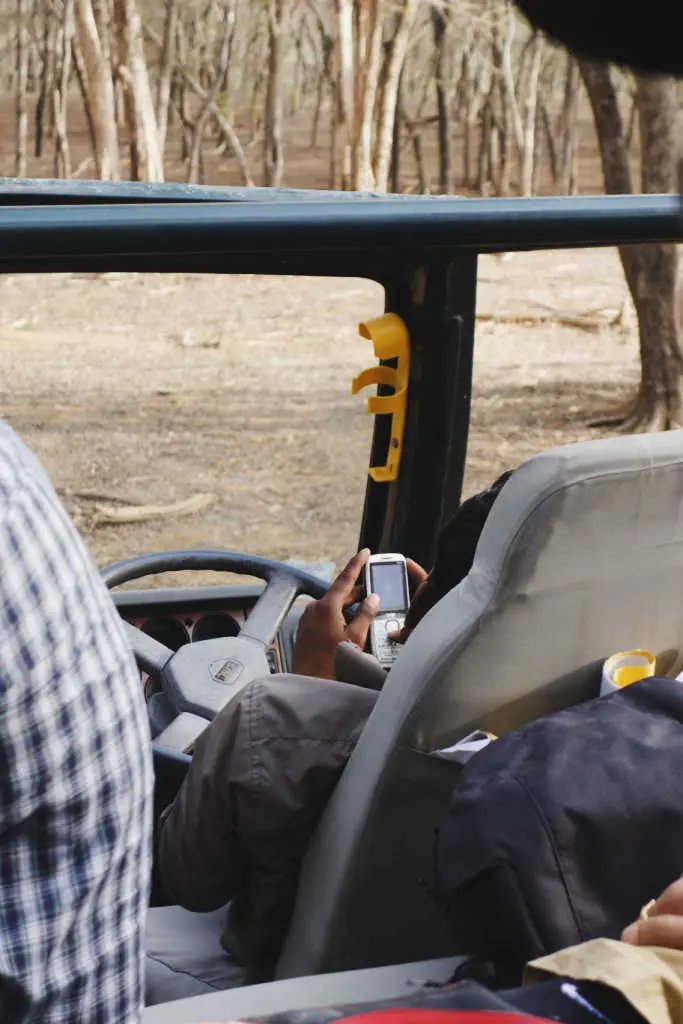
Furthermore, even when there was no possibility of seeing a tiger, the guides had their binoculars out. They were making bird calls. They’re doing anything to keep the “fake” safari rolling along. In contrast, on day three, when we saw the tigers, we noticed one of the guides was playing Tetris. There’s no need to put on a show―of course, the entertainment was the tigers.
Two Americans Break the System
The biggest shock, however, was when we finally arrived in Zone 3. To summarize, we noticed that there were jeeps and canters from other zones. To clarify, on the back of each vehicle, there’s a little tile number that indicates which zone you will be exploring for the day. We were told that vehicles aren’t allowed to cross zones, or else they would face costly fines.
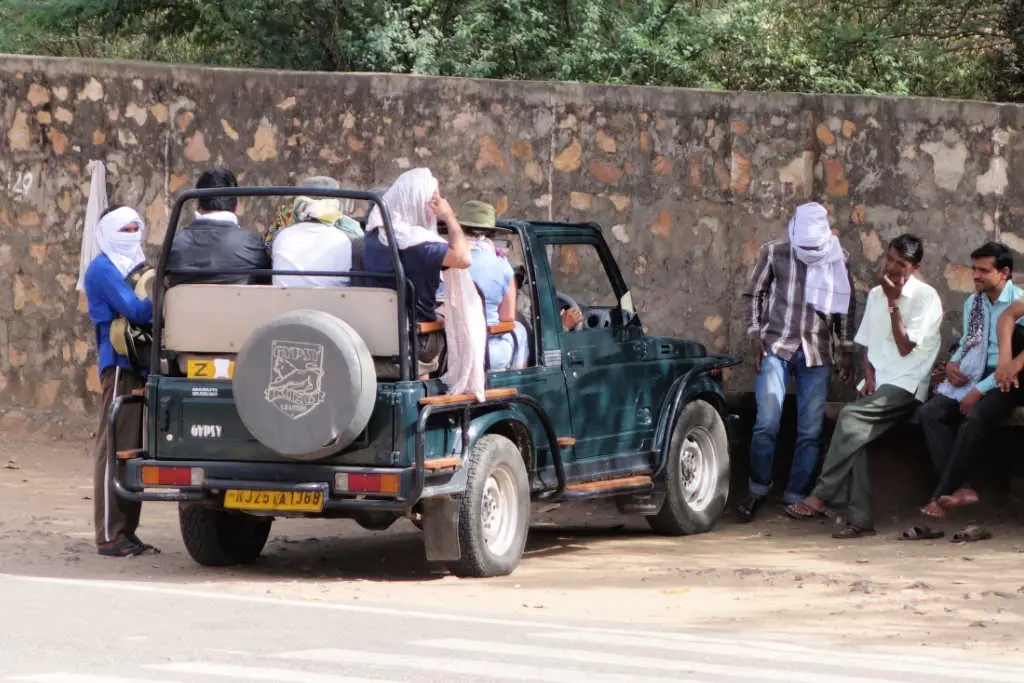
We asked our chatty guide on the canter how those other vehicles were allowed to cross zones. Basically, he said that the guides/rangers would cross over for tip money. When we got back to our hotel, we shared all of the information we accrued over the last three days with other guests, most of them didn’t see the tigers.

The smart guests were angry while the simple-minded didn’t believe the information we were supplying them. Essentially, they thought we were conspiracy theorists.
However, by the afternoon safari, none of the jeeps/canters had zone numbers on the back of them. They were all removed. How’s that for conspiracy theorists? So, low and behold, two Americans break the system of how the entire Ranthambore Tiger Reserve process works.
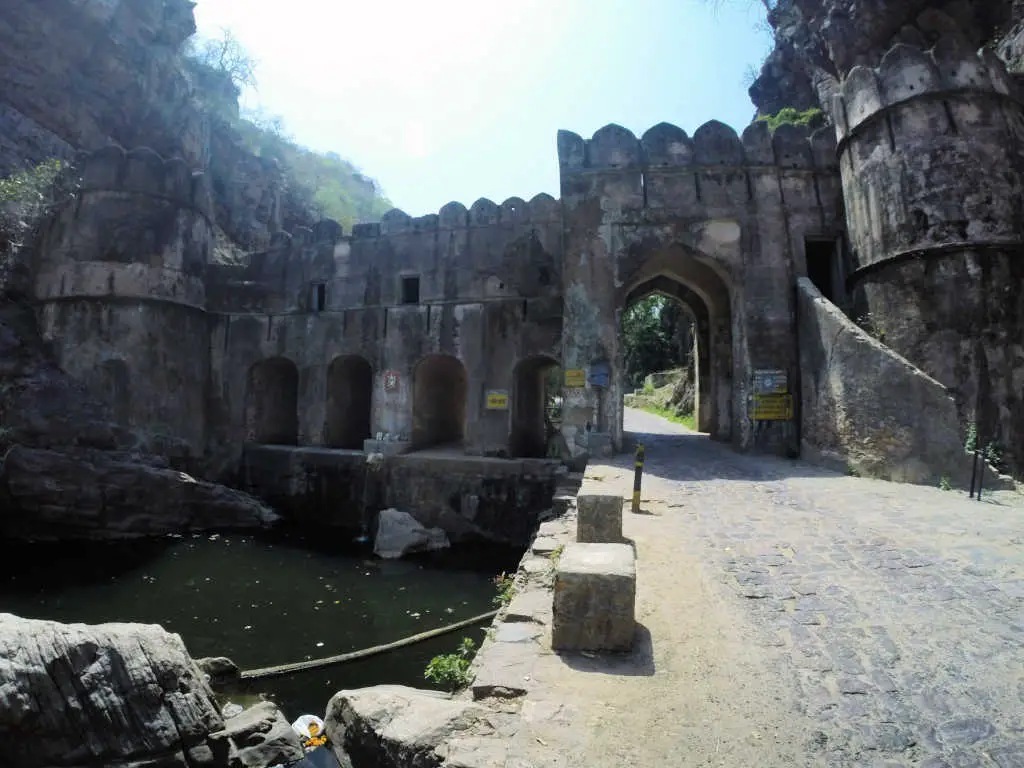
Finally, after divulging the information we learned to other travelers, we began receiving harsh looks from rangers. In short, the more we began uncovering and sharing information about the fraud, the more we began fearing for our safety. At a certain point, Audrey was genuinely concerned. Facetiously, she joked that we were going to be put in a trunk and taken to the border of Pakistan.
6. The Best Way to Visit Is…
If we could do this all over, we would do things differently. First, we would have reserved accommodation in Sawai Madhopur ourselves instead of booking through a tour operator. Also, we would have booked a combination of jeep and canter tours over two days―perhaps, three jeep game drives and one canter. If you’re looking to see other zones/areas (or either the Ranthambore Fort or Trinetra Ganesh Temple) of the park then perhaps add another day.
However, if India seems a bit too intimidating to do on your own, which is understandable, try Nikita Holidays. They have a really nice Delhi, Agra, Jaipur & Ranthambhore Tiger Safari Reserve 5-Day tour. It includes three safaris, and five-star hotels, and handles all of the transfers between the various attractions and cities.
Tip: Use TripAdvisor to book a tour deal that includes Delhi, Taj Mahal, and Ranthambore Tiger Reserve.
No matter who you book through, make sure you advocate for yourself. To see the tigers, make sure you reserve game drives in zones 2 and 3.
7. Money Talks
Visitors to Ranthambore Tiger Reserve who desire to see the tigers should bring tip money. Especially, if you’re staying at a budget or mid-range hotel. Guests of luxury hotels like Oberoi will be treated like royalty and will be taken directly to the tigers. The rest of us will have to pay tips, become confrontational, or simply get lucky.
For example, we would recommend talking to your guide and giving them about USD 15 for each passenger. Negotiate based on this starting amount. There’s little doubt that if you pay a spot will “miraculously” open up either zone 3 or 2.
The above review of Ranthambore Tiger Reserve may seem grim, however, we would encourage other travelers to visit the area. Seeing tigers in the wild is quite a special experience and well worth the minor irritations and setbacks we sustained. Have you gone on a tiger safari below? Let us know about your experience in the comments below. Finally, see our entire review of our time in India in the video below.
We Need Your Help
Did you find this article helpful? If so, bookmark it and when you’re planning your next vacation click on any of the links below before finalizing reservations. You’ll get the best price, we’ll earn a small commission, and you’ll help support future articles.
Thank you!
BEST TRAVEL SEARCH ENGINES
🏘️ Book Your Accommodation
We use Tripadvisor and Priceline’s Express Deals to compare prices and reviews in advance and check availability
✈️ Book Your Flight in Advance
To find the cheapest flight options, you can use WayAway and Skyscanner to find the most suitable choice for you
🚗 Reserve Your Rental Car
Use DiscoverCars and Skyscanner to compare prices and view the largest selection of vehicles

